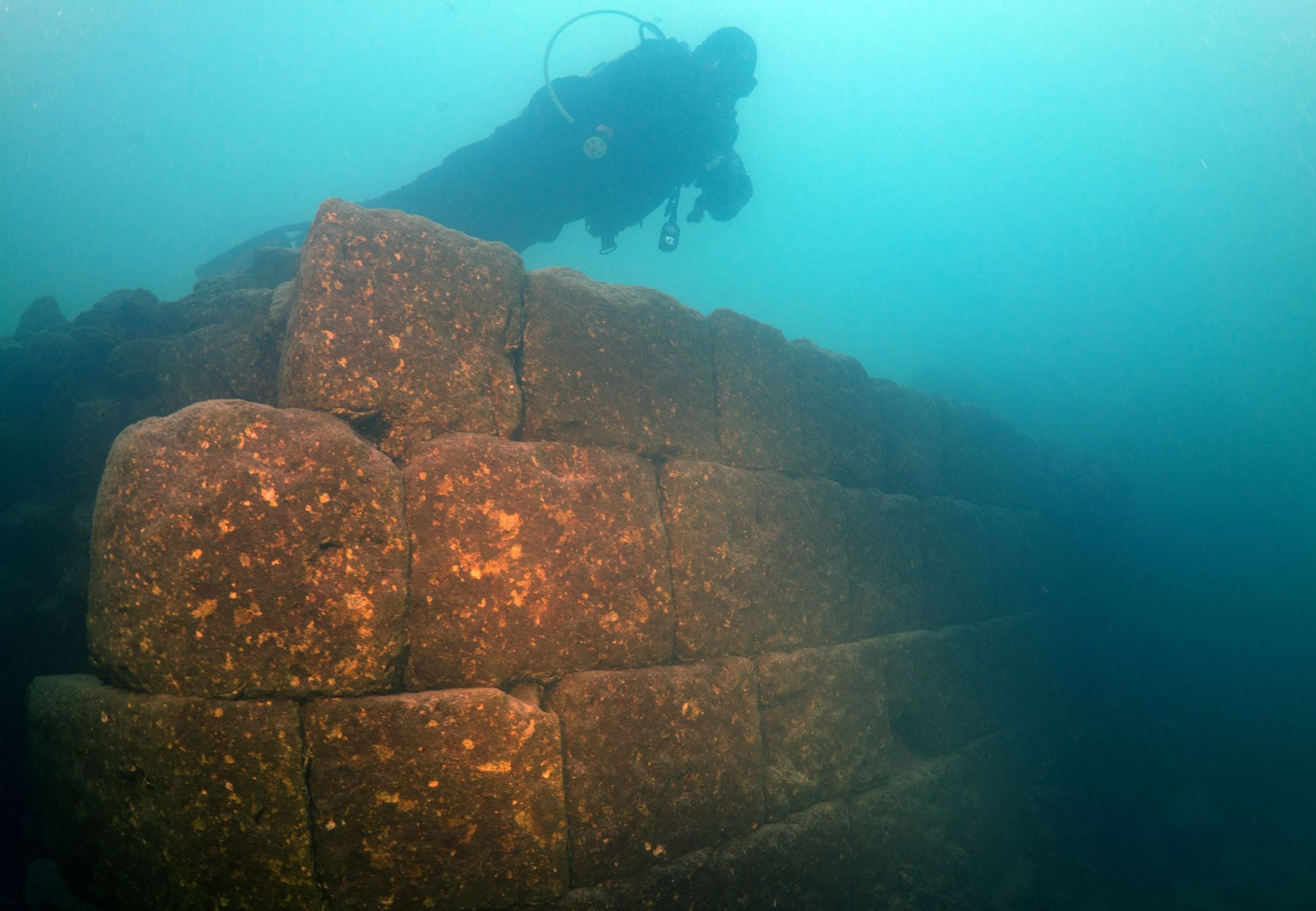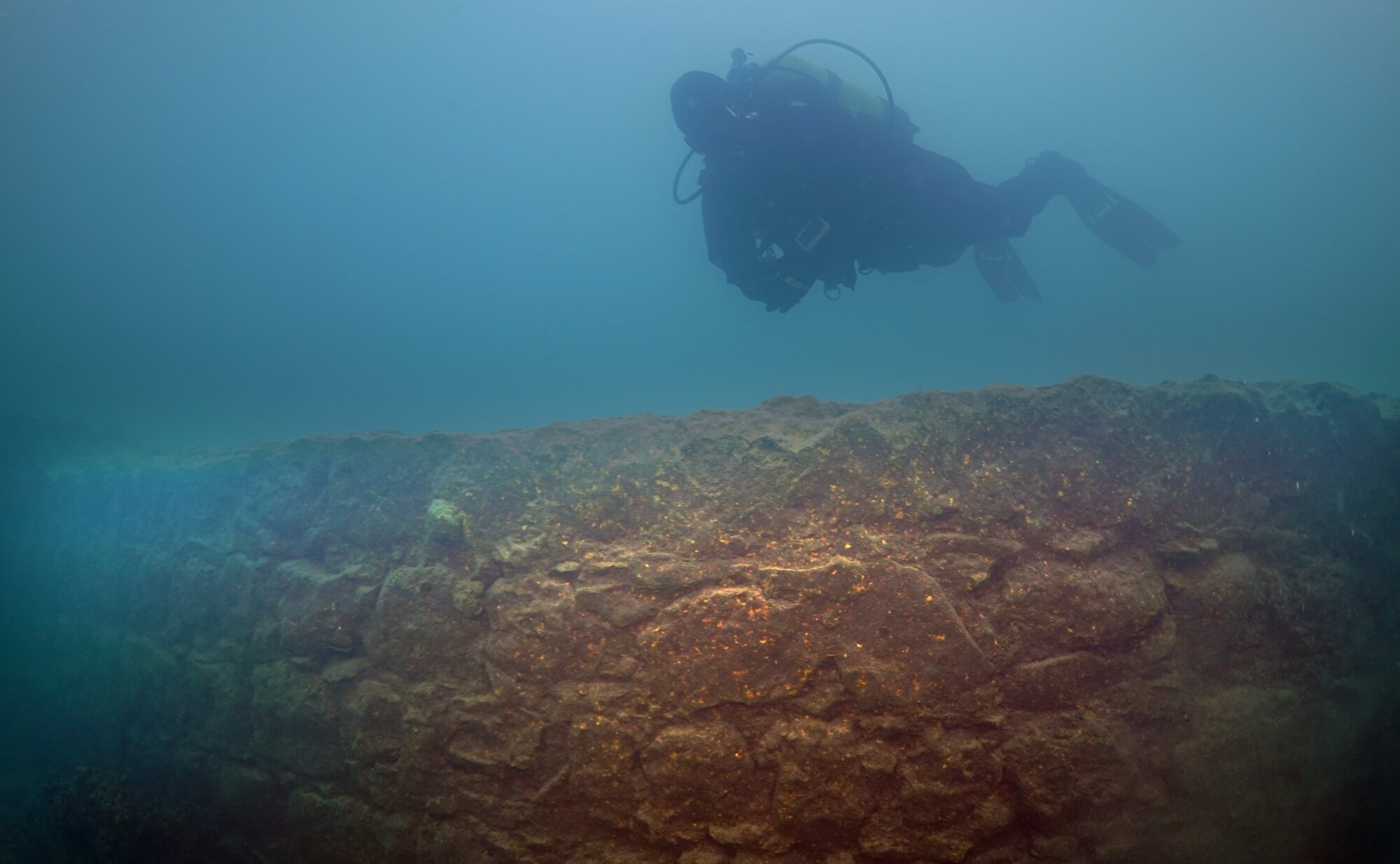In 2016, during an investigation for the Lake Van monster, researchers stumbled upon a remarkable archaeological discovery. The bottom of the lake yielded a 3,000-year-old castle, the remains of which have been found in the depths of Lake Van, located in Turkey.

This ancient civilization, known as the Kingdom of Van, is thought to have been from the Iron Age Urartu and to have existed from the eighth to seventh centuries BC. This is evidenced by the discovery of underwater ruins.
Tahsin Ceylan, an underwater photographer who led the diving team of discoverers (which does not include an archaeologist), mentioned that there was some speculation that something could be beneath the surface, but that most archaeologists and museum officials said they wouldn’t come across anything. Nevertheless, they went ahead with the research and made a remarkable discovery – the ancient “castle”.
For the past 10 years Ceylan’s team has been exploring the waters beneath Lake Van, documenting natural features like microbialites (living, organic rock structures that are similar in some ways to coral) as well as archaeological sites, such as a Russian ship that dates to 1915.
This time, the enigmatic underwater ruins were found outside the harbor of Adilcevaz, a town in Turkey that has been inhabited for thousands of years.
According to Ceylan, the castle is approximately 1 kilometer [less than a mile] long and has a solid structure, and it is made primarily of cut stones. Interestingly, the team had found a lion drawing on one of them, supporting the idea that Urartians – a people who flourished in Turkey about 3,000 years ago – may have built the structure. Lions were a popular motif among the people of Urartu.

On the other hand, it was later found that parts of the “castle,” a term that the discoverers use to describe it, likely date to the Middle Ages, which lasted from about AD 476 to 1450, and it may not be an entirely new discovery: Reports from surveys of the Lake Van area conducted in the 1950s and 1960s noted the existence of the structure. It’s not clear when the castle was washed underwater.
However, Paul Zimansky, a history professor at Stony Brook University in New York, believe it’s possible that some of the 3,000-year-old Urartian remains seen in the photos were actually reused by castle builders during the Middle Ages.
In fact, a vast collection of surveys and documents published by archaeologists who surveyed the Lake Van area in the 1950s and 1960s includes mentions of both Urartu and medieval remains in the area.
The past of the land of Urartu is enigmatic and full of obscurity due to the lack of knowledge about it. The Hebrews used to call it Ararat, whereas in our present day it is known as the Kingdom of Van.
Today, it is difficult to trace the origins of the kingdom, but archaeologists suggest that Urartu, prior to its destruction, was located in Eastern Turkey, Iran and the current Armenian Republic.
The first recorded reference to Urartu was in Assyrian records. This Urartu castle located underwater stretches for a kilometer and its walls reach 10-13 feet in height. Despite its age, it remains well-preserved due to the alkaline conditions of the lake.
Van Lake’s past spans 6,000 years, making it one of the oldest lakes in existence. Located in Turkey, it is the largest lake in the country and the second largest in the Middle East. In addition, it is the biggest sodium water lake in the world. Located in the Eastern Anatolian region, near the Iran border, the lake was created due to the volcanic eruption of Mount Nemrut, in the province of Van.



